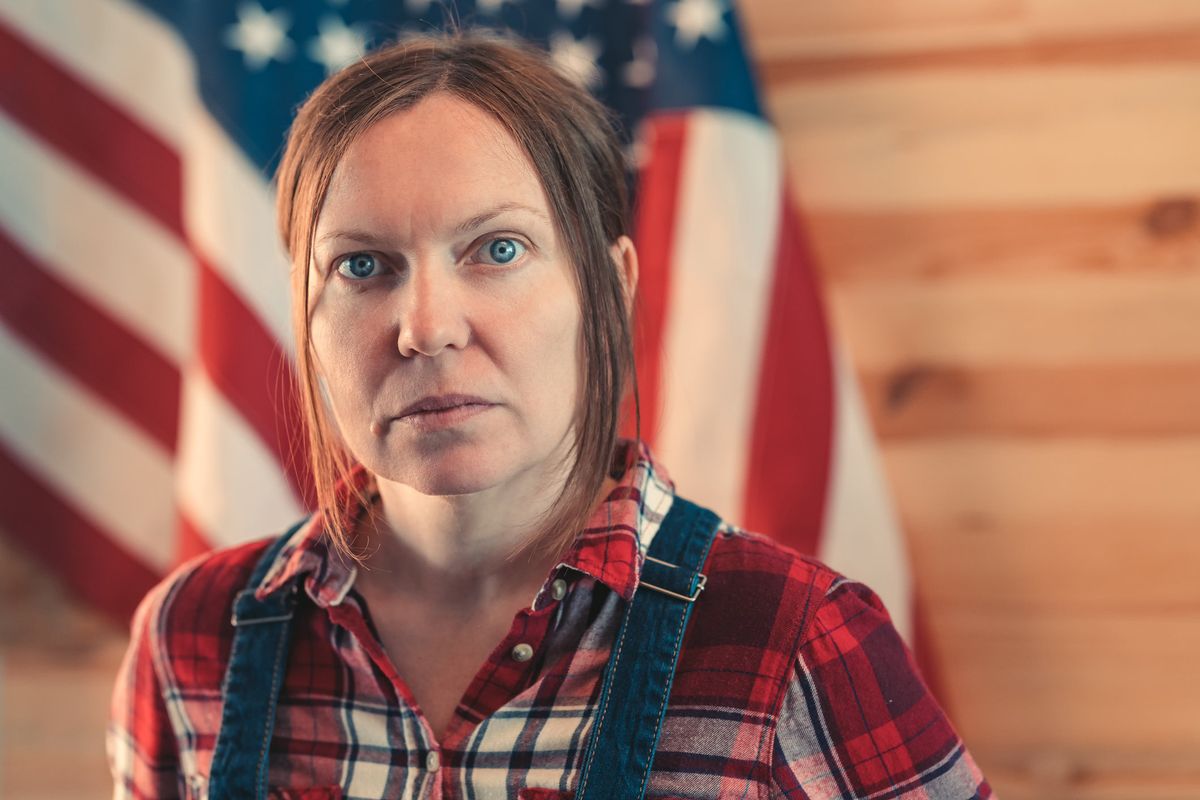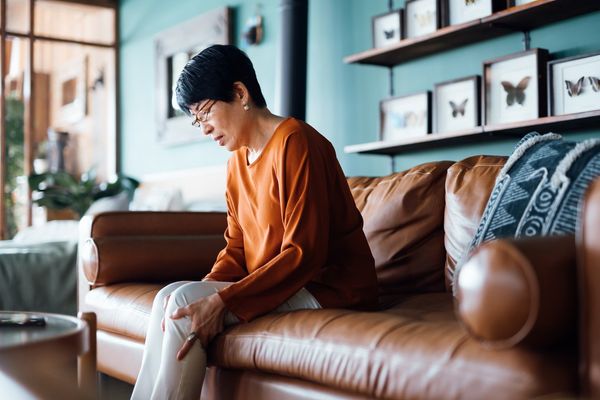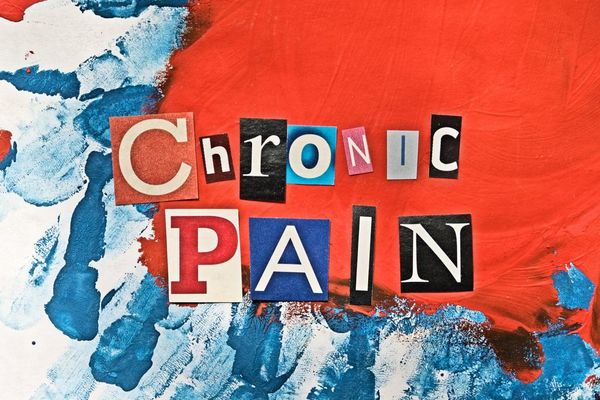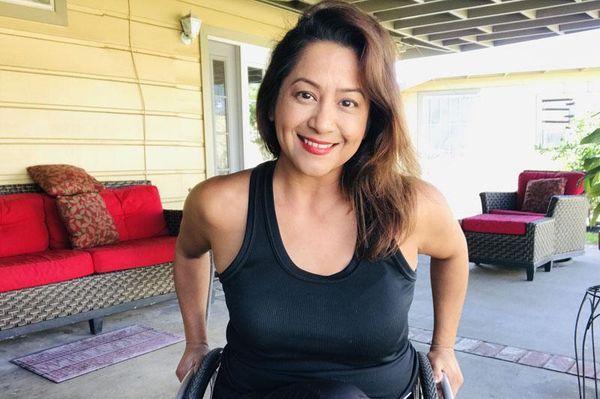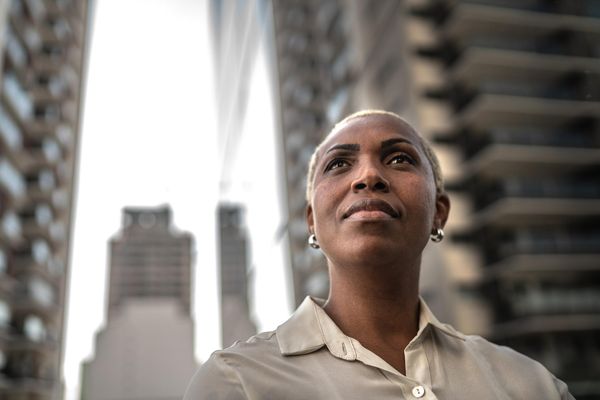Ginger Nord likes to look people in the eye when she walks down the street in her rural Indiana town; it makes her feel in control. But with two diseases that affect her nerves, muscles and joints, she has to keep her eyes on the ground to avoid tripping on even small sidewalk cracks.
Nord is now 52, and it's been two decades since she was diagnosed with Charcot-Marie-Tooth (CMT) disease, a hereditary condition that causes peripheral nerve damage and weakens arm and leg muscles. She'd always just thought she was clumsy. Nord also has Ehlers-Danlos syndrome, a connective tissue disorder that makes her joints overly flexible and painful.
As a result of her conditions, Nord wears leg braces and has intermittent burning sensations, numbness and chronic pain in her back, knees and hips. Post-traumatic stress disorder (PTSD) from multiple childhood traumas disrupts her sleep, exacerbating physical symptoms.
The CDC estimates that nearly 40 million women in the United States — and more than 16 million rural residents — suffer from chronic pain that lasts for more than six months or frequently limits life or work activities.
Finding healthcare providers who understand and take women's pain seriously can be challenging enough. In rural America, it can be near impossible.
Gender imbalance
Women are more likely to have issues that lead to chronic pain, according to Dr. Kimberly Templeton, professor of orthopedic surgery at the University of Kansas and a member of HealthyWomen's Women's Health Advisory Council.
Fibromyalgia, osteoarthritis, rheumatoid arthritis and lupus are all conditions that disproportionately affect women and can cause chronic pain, which is associated with depression, also more common among women.
Research also shows gender differences in perceptions and expression of pain — women are more likely to experience pain and to experience it with more intensity
"It's not known if this is a physiologic or anatomic issue, or issues with the impact of estrogen on tissues or the heightened inflammatory response in women," Templeton wrote in an email exchange. "[It] is likely a combination of all of the above."
Finding the sources of some types of chronic pain, such as autoimmune diseases, can be difficult and sometimes takes years. Common symptoms like fatigue or muscle aches can have a range of causes and are often ascribed to emotional problems in women.
Angela Gregory, a health coach who helps people manage chronic pain through nutrition and fitness, was diagnosed with fibromyalgia 26 years ago, at 19. She describes it like having the flu.
"You kind of feel like you've got weights on all of your limbs," Gregory said.
Doctors have questioned Gregory's diagnosis many times, but all have ultimately concluded that it is correct.
Accessing care in rural America
There are no neurologists in Nord's small town, just "local country doctors" who handle minor ailments. She had to go to Fort Wayne — an hour away — when she fell and hit her head, which ultimately led to her CMT diagnosis. The clinic that confirmed CMT with a DNA test was two and a half hours away in Indianapolis.
"Given the increase in knowledge regarding sex- and gender-based differences in pain, we need to assure that healthcare professionals, including those in rural communities, are aware of these differences," Templeton said. "This is where telehealth may be of benefit."
Telehealth can offset isolation that can make depression and anxiety worse.
"Telehealth can help women, especially during a pandemic and especially those in rural communities, to address pain by allowing continued access to their healthcare professionals," Templeton said.
But telehealth only works if you can access it, and 19 million Americans — including one-fourth of rural residents and one-third of tribal populations — still don't have the necessary broadband internet.
Telehealth access for rural communities recently got more difficult when some insurers stopped waiving associated consumer costs on October 1.
Doctors can’t always help
Nord doesn't bother seeing doctors for her CMT anymore. It's hard for her to drive to Fort Wayne, and most doctors only offer her pain medication, which Nord avoids because of a family history of addiction. She also finds some doctors don't necessarily understand the disease.
"As patients, we will tell them this is going on, and they will say it has nothing to do with Charcot-Marie-Tooth." But in her online community, Nord finds people with similar issues.
"We actually know more about this disease than the doctors do because we live with it on a daily basis," Nord said.
Gregory hasn't seen a doctor for fibromyalgia in years. In fact, she doesn't have a doctor at all. She says that her doctors only offer to prescribe medications, which have not worked or made her feel worse.
So she manages on her own.
"I've learned to listen to my body," Gregory said. "I feel like I know me best."
It's not unusual for women to avoid care, according to Templeton. "The societal gendered expectation is that women are the nurturers and care for everyone else before themselves."
But delaying care can worsen conditions that cause chronic pain.
"We need to help women prioritize their own health and help them develop more self-efficacy to take time to seek care and assure that they receive the care they need and are looking for, as this can lead to better outcomes, overall."
Listening to your body
Templeton advocates education. "Learn what is causing your pain and understand that there are things that you can do to improve it."
Gregory coaches others on tactics she uses to manage her own pain, especially adjusting your mindset.
"Once you realize that you have more control than you may have initially thought you did, everything starts to fall into place."
She recommends tracking symptoms, food and physical activity to identify patterns and triggers. What works for Gregory might not work for others; what works one day may not the next.
"It's really easy to get frustrated and want to throw your hands up and be done," Gregory said. That can make the pain worse. "The hardest [thing] is finding the balance, and sticking with it until you find what works for you. And not giving up."

